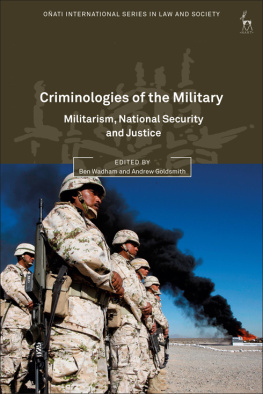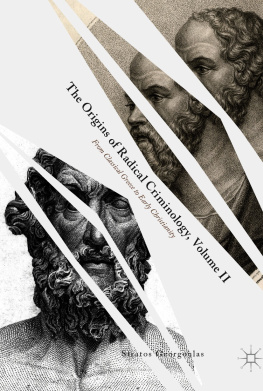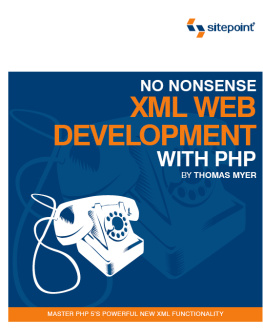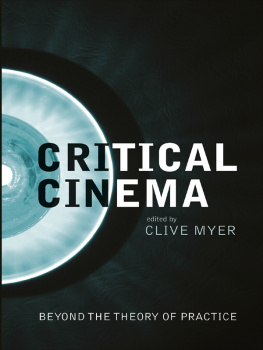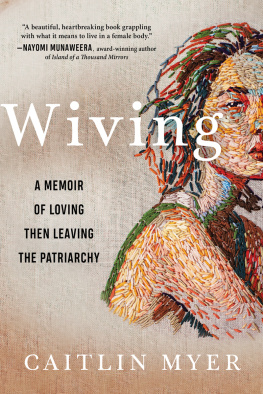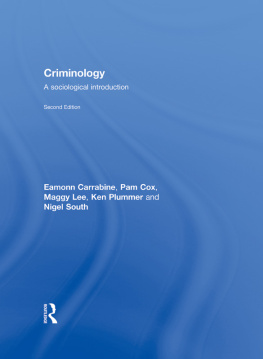The Origins of American Criminology
EDITORS
Freda Adler
University of Pennsylvania
William S. Laufer
University of Pennsylvania
EDITORIAL BOARD
Advances in Criminological Theory
Robert Agnew
Emory University
Ko-Lin Chin
Rutgers University
Albert K. Cohen
University of Connecticut
Francis T. Cullen
University of Cincinnati
Delbert S. Elliott
University of Colorado
David P. Farrington
Cambridge University
James O. Finckenauer
Rutgers University
John H. Laub
National Institue of Justice
John MacDonald
University of Pennsylvania
Terrie E. Moffit
Duke University
Joan Petersillia
Stanford University
Robert J. Sampson
Harvard University
Kip Schlegel
Indiana University
Lawrence W. Sherman
University of Maryland
David Weisburd
Hebrew University
George Mason University
Elmar G. M. Weitekamp
University of Tubingen
William Julius Wilson
Harvard University
The Origins of American Criminology
Advances in Criminological Theory Volume 16
Francis T. Cullen
Cheryl Lero Jonson
Andrew J. Myer
Freda Adler
editors
First published 2011 by Transaction Publishers
Published 2017 by Routledge
2 Park Square, Milton Park, Abingdon, Oxon OX14 4RN
711 Third Avenue, New York, NY 10017, USA
Routledge is an imprint of the Taylor & Francis Group, an informa business
Copyright 2011 by Taylor & Francis.
All rights reserved. No part of this book may be reprinted or reproduced or utilised in any form or by any electronic, mechanical, or other means, now known or hereafter invented, including photocopying and recording, or in any information storage or retrieval system, without permission in writing from the publishers.
Notice:
Product or corporate names may be trademarks or registered trademarks, and are used only for identification and explanation without intent to infringe.
Library of Congress Catalog Number: 2010026913
Library of Congress Cataloging-in-Publication Data
The origins of American criminology / Francis T. Cullen [et al.].
p. cm. -- (Advances in criminological theory ; v. 16)
Includes bibliographical references and index.
ISBN 978-1-4128-1467-6 (alk. paper)
1. Criminology--United States--History. I. Cullen, Francis T.
HV6022.U6O75 2010
364.973--dc22
2010026913
ISBN 13: 978-1-4128-1467-6 (hbk)
Contents
Francis T. Cullen, Cheryl Lero Jonson, Andrew J. Myer, and Freda Adler
Jon Snodgrass
Colin Goff and Gilbert Geis
Robert J. Sampson
Francis T. Cullen and Steven F. Messner
Richard Rosenfeld and Steven F. Messner
Robert Agnew
Colin Goff and Gilbert Geis
Lawrence W. Sherman
Jennifer L. Hartman and Jody L. Sundt
John F. Wozniak
Ronald V. Clarke and Marcus Felson
Nicole Leeper Piquero and Paul Mazerolle
C. Ronald Huff and Frank R. Scarpitti
John H. Laub
Michael R. Gottfredson
Ronald L. Akers
John H. Laub and Robert J. Sampson
Alex R. Piquero
Francis T. Cullen, Cheryl Lero Jonson,
Andrew J. Myer, and Freda Adler
Both introductory and theory textbooks are the main conduits through which criminological theory is learned and preserved across time. The very richness of theorizing confronts text authors with a daunting challenge: How to convey in a delimited space the diversity of extant crime explanations? The consensus strategy involves three steps. First, divide up theories into neat compartments called schools of thought. Second, show how later theories built solidly on earlier ones. And third, distill and present the key ideas of each tradition and of each theory within a tradition. Thus, out of necessity, clarity, simplicity, and parsimony are privileged.
This approach to conveying criminology is functional. Students are taught clearly how to recognize theoretical apples from theoretical orangesstrain theory from control theory from social learning theory from critical theory, and so on. The take away message is easier to internalize. What do strain theorists say causes crime? Strain is the ready answer. What do strain theorists have in common? They argue that some form of strain causes crime. Thus, who founded strain theory? Well, Robert Merton. And how did Agnew extend this early strain theory? Well, Agnew identified three, rather than just one, form of strain. Bravo! Undergraduates, you will do well on your multiple-choice test; graduate students, you will pass your comprehensive examination.
But this shared approach to conveying the contours of criminological thought risks being incomplete, if not misleading. It distorts social reality, reifying theories in truncated form and constructing an image of theorizing that is pristine. Ideas seem to exist in a virtual space, uncluttered by complexity and somehow detached from their authors biographies and social context. The growth of ideas appears to take on an air of inevitability, as though, for example, Clifford Shaw and Henry McKays social disorganization theory was destined to be transformed by Robert Sampson into collective efficacy theoryor, if not Sampson, then surely by someone else. And the invention of theories is implicitly portrayed as a strictly cognitive gameof some bright folks sitting at a desk, reading previous works, and coming up with a nice new theory.
Criminological theorizing, however, is a human enterprisea messy affair, shaped by contingency and serendipity. Odd events and questionable decisions place scholars on life-course trajectories that result in theoretical innovation. How many other scholars made different choices that thwarted their potential to create fresh perspectives? Indeed, as with any science or social science, understanding the origins and growth of ideas requires what C. Wright Mills (1959) called a sociological imaginationa sense of how biography and history intersect to produce unique human conduct. Sociologists of science, such as Robert Merton (1973), have understood this for many years.
As we explain in more detail below, our project is a call for criminologists to take seriously the need to engage in a sociology of criminologythe systematic analysis of the diverse factors that have shaped the emergence and growth of criminological theory. A key part of this enterprise is collecting data about theorists and the context in which their ideas were invented. The core purpose of this volume is to contribute to this deeper analysis by ensuring that such biographical and contextual information surrounding criminological theorists is preserved.
Deconstructing the Nature of Science
In 1962, Thomas Kuhn published The Structure of Scientific Revolutionsa work that sparked inordinate attention and was reissued in an expanded edition in 1970. Kuhn challenged the traditional view of scientific progress, which held that knowledge was produced through rational experimentation that led incrementally to substantive understanding about the natural world and to new and better theories. He offered the heretical claim that we may have to relinquish the notion, explicit or implicit, that changes of paradigm carry scientists and those who learn from them closer and closer to the truth (1970: 170).





